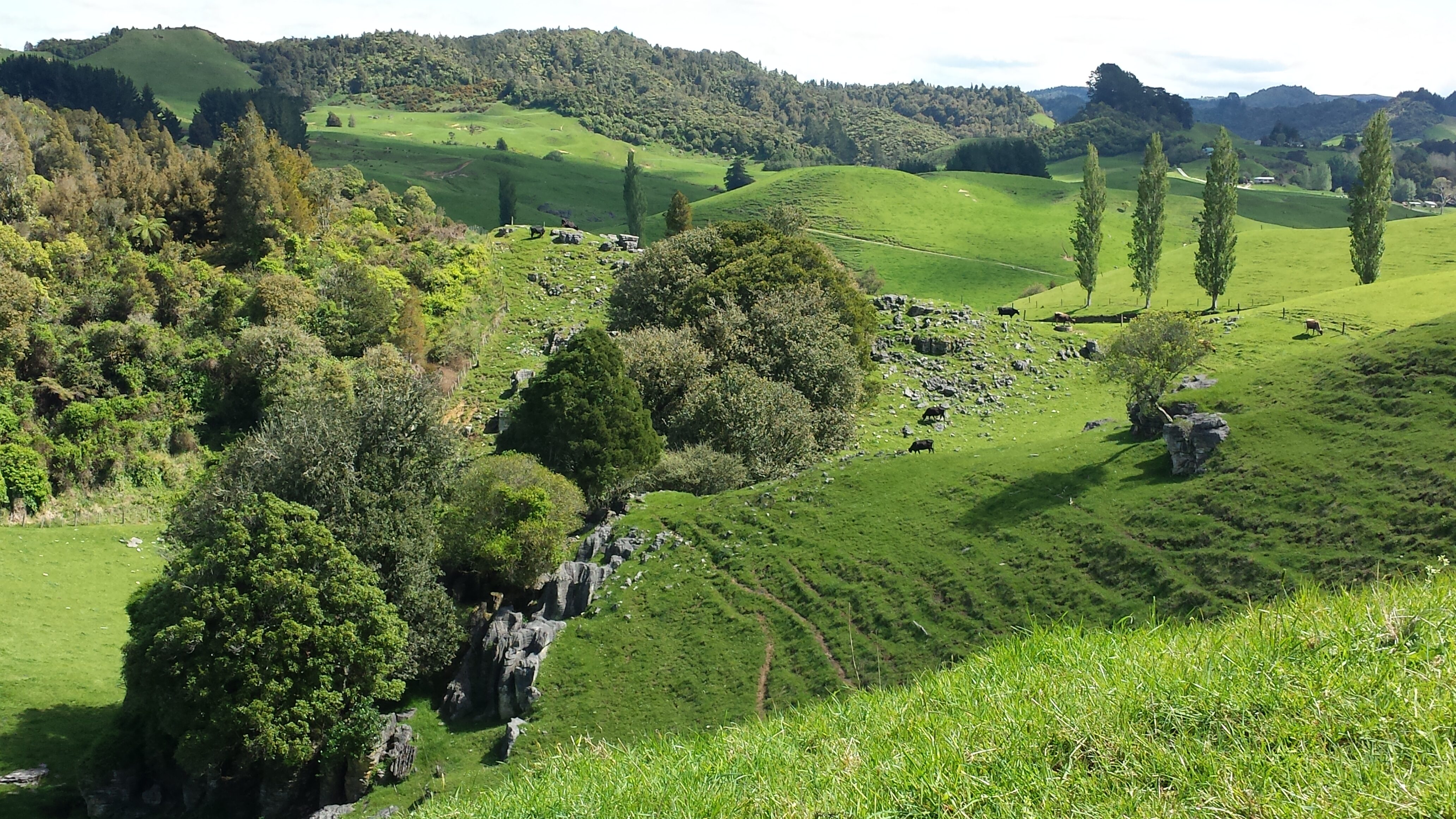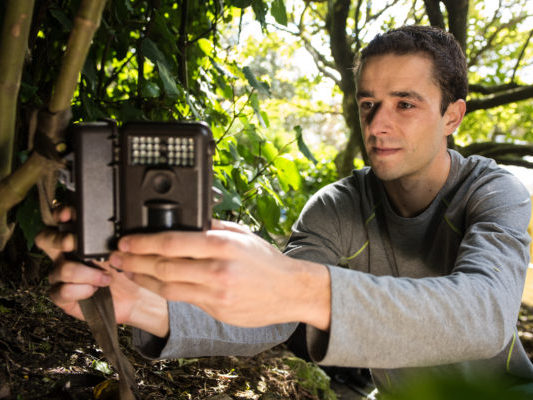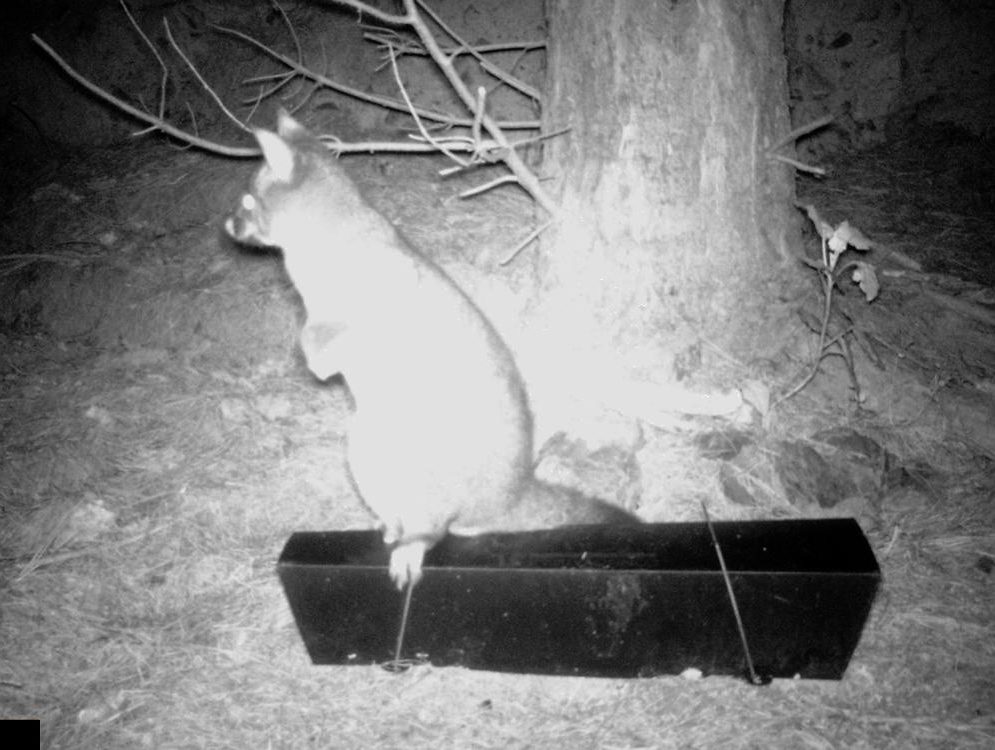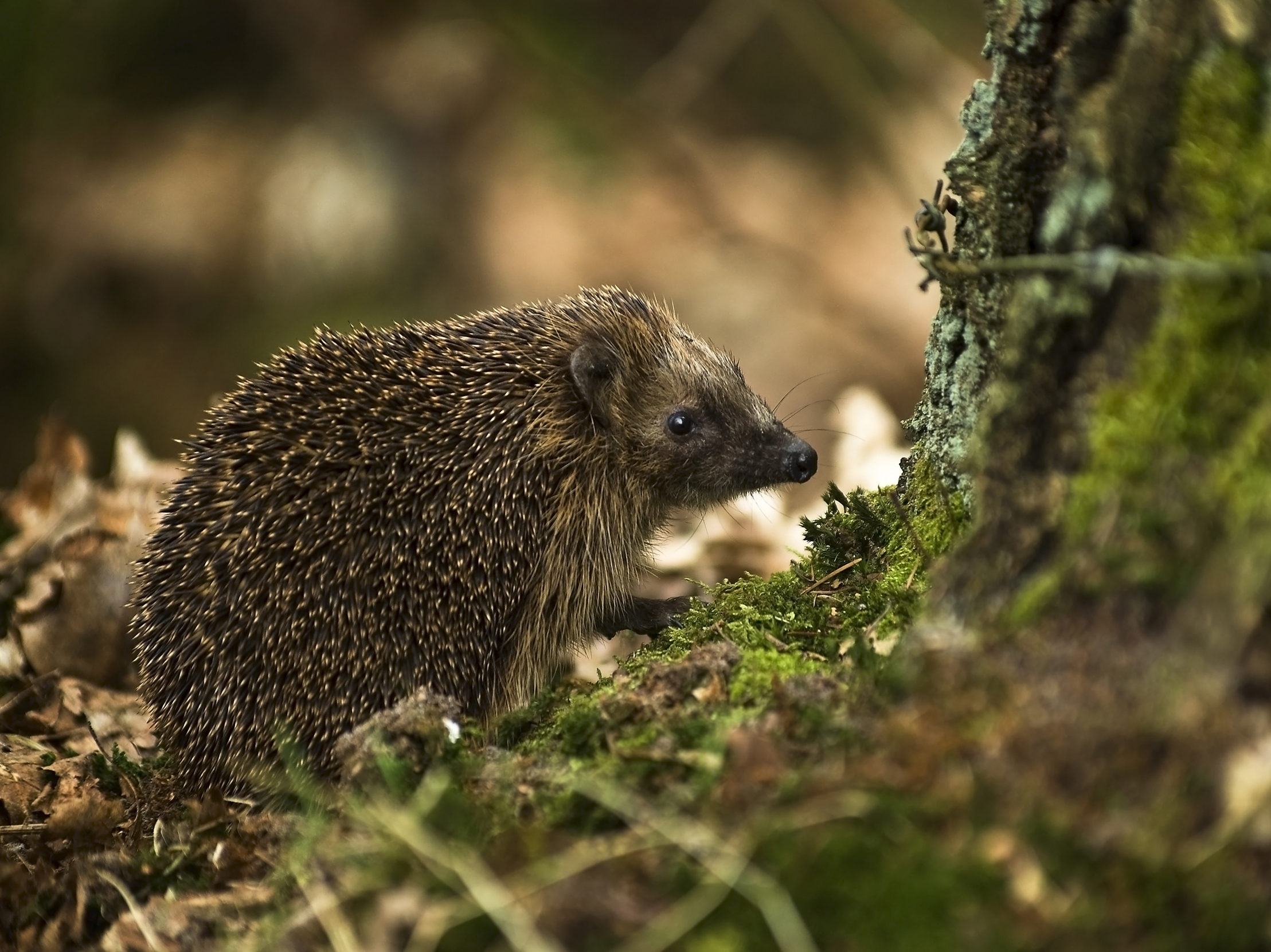A recent study by Brandon Breedt and Carolyn King provides the first estimates of the proportion of the Waikato Region occupied by each of the target introduced mammal predator species. The results offer a warning to pest managers that pests are more widespread and harder to remove than is commonly assumed, and that the absence of captures after an operation does not necessarily indicate that it has succeeded.

The study concentrated on seven widespread introduced pest species and their social, environmental, and economic effects: the common brushtail possum (Trichosurus vulpecula), the European hedgehog (Erinaceus europaeus), ship rat (Rattus rattus), house mouse (Mus musculus), stoat (Mustela erminea), ferret (M. putorius), and weasel (M. nivalis).
“We used systematic arrays of camera traps combined with site occupancy analyses to estimate the site-specific presence and probability of detection of the principal target pests across the three main habitats of Waikato Region, classified by season,” write the authors.
The aims of the project were:
- to document the distribution of seven important mammalian pests across the three main vegetation types of the Waikato Region;
- ask whether the use of a combination of camera traps and advanced statistical analysis could be a cheap and efficient method of finding pests across a broad landscape.
The authors then used the data to provide information on which habitats are most important for management operations targeting different pest species and to cast light on the reliability of conventional pest contractor reports.
“Effective predator control programmes aiming to achieve wide, landscape-scale coverage need detailed and current information on the locations of pest populations and the probability of removing them where present. That information in turn depends on clearly documented, efficient and cost-effective methods of pest species detection. Conventional surveys counting the proportion of traps or tunnels registering a positive response are useful but labour-intensive at landscape scale. They can detect animals willing to engage with an artificial device, but not those that are temporarily absent, fail to locate a device before it is removed, or have learned to become untrappable.”

The Waikato Region is the fourth largest local authority region in the country, covering most of the central North Island (approximately 25,000 square kilometres). The New Zealand Land Cover Database defines 33 land cover classes for mainland New Zealand and was used by the researchers to identify vegetation types in the Waikato study area.
“In 2012, 52% of the vegetation in the Waikato was classed as high production grassland, 19% was still indigenous forest, isolated in patches of various sizes, and 11% had been converted to exotic forest such as pine plantations. Together these made up 82% of the vegetation in the Waikato region, distributed across the landscape as fragments of various sizes. The other 18% comprised a mixture of widely scattered minor habitat types.”
Within the three main Waikato vegetation types the authors grouped all fragments by size, then surveyed potential sampling sites to locate suitably large representatives of each habitat type in the region.
“We selected two sites of each habitat type for monitoring. In addition, we added a small fragment of native bush at Te Miro, well studied during a previous project, to check for any possible difference in species composition between large tracts of protected indigenous forest and the much smaller forest fragments commonly found on Waikato farmland.”
For the study, 32 cameras were used to detect the seven mammal predator species. They were split into two groups of 16 cameras to enable the monitoring of two areas simultaneously.
“The use of camera images to determine the presence of a target animal rather than conventional traps or tracking tunnels has many advantages. Camera trapping provides sequences of time-stamped observations at low labour costs, with accurate species identification. Cameras are non-invasive and avoid trap-shyness because they do not require cautious animals to interact with an artificial device. Cameras are especially useful to monitor highly cryptic species in very extensive or difficult terrain where other field methods are likely to fail,” write the authors.
“At each study area, up to sixteen cameras were set up in a four by four grid, 500 m apart. This distance was enough to minimise visits to multiple sites by individuals of most species except the mustelids, although male ship rats have been known to travel more than 500 m across pasture. The smallest forest fragment had room for only five cameras spaced 100 m apart. At each camera site, cameras were secured to a suitable tree or fencepost, about 130 cm above the ground. Cameras were set to trigger three times in rapid succession, with a cooldown of thirty seconds before it could be triggered again.”
Two types of lures were used to attract target species to the camera traps, both supplied by Goodnature.“Rodent Detector Cards contain a long-lasting non-toxic lure adjacent to a scratch sensitive surface, by which rats, mice, possums and hedgehogs can be identified from tooth marks. The Goodnature stoat lure, another long-lasting non-toxic lure, composed primarily of rabbit meat supplied as a paste in a dispensing pouch. Both lures were placed at the bottom of the tree or fencepost. Detector cards were attached to the tree c. 10 cm above ground level, and the lure applied directly to the tree just above the card, using a teaspoon to smear the material into a circle 3–5 cm across. These lures are formulated to last up to a month, are water resistant and stable across a range of different climatic conditions, and attractive to mustelids, hedgehogs and rats. This combination of lures was expected reliably to attract all the target species to the camera traps if they are present at the study site.”

Cameras were left in place for two weeks per session and data collected over twelve months from March 2016 to February 2017, during a total of four sessions in each study area.
“The first set was collected between March and June (autumn), the second from June to August (winter), the third from September to November (spring) and the final set from December to February (summer). All the target species could be identified from the camera images, and their activity periods could be deduced from the time-stamps recording the hours and dates of their visits.”
Possums were easily identified by the camera traps with analysis of the time-stamped images showing clear periods of peak activity and the number of visits to each camera.
“Possums were almost exclusively nocturnal, consistent with current knowledge of possum behaviour predicting that they are most active between 11.00 pm and 2.30 am, although we also found another peak of activity around 8.00 pm. Activity started earlier in the day in winter and later in summer, when days are longer. Summer visits also ended later in the day.”
Similarly, hedgehogs and rats were almost exclusively nocturnal, while mice were active from late afternoon to early morning.
“In all but one area, mice were detected within the first three days. In Pasture South in the summer, mice were detected only on day 10 of 14, suggesting that mice really were scarce there, and a longer study period would be unlikely to find more of them.”
Ferrets were mostly nocturnal.
“Nocturnal detections of any mustelid were most often recorded in places where ferrets were present, but very rarely at others. Stoats, known from other studies to be active throughout the day and night, were recorded mostly during the day. Weasels were detected too rarely to decide a pattern.”

So what did the study reveal about detectability of target predators?
The data comprise four sets of estimates, one set of 15 (five targets, three habitats) for each season of the year, total of 60. Of these, only 10 (17%) returned probabilities of detection of more than 50% for that species in that habitat at that season, given that at least one individual was present then.
“Management staff already know from experience that the distributions of all the species we studied were significantly influenced by habitat and season, not only for simple presence or absence assessment but also for estimates of abundance. Our analyses also show another point, less widely known, that the chances of detecting pest species where they are present are low and rarely consistent. Moreover, removal rates are likely to be lower than is normally assumed.”
“For example, in one area of Waikato farmland, professional trappers missed removing 7 of the 28 ferrets estimated to be living on a 2400 ha grid monitored by cameras. In one kiwi protection area the resident stoats learned to become virtually untrappable, enabling them to continue to kill kiwi until the traps were temporarily replaced with 1080. All these factors emphasise the difficulties of removing only some members of a pest mammal community and not all of them, as envisaged by Predator-Free NZ.”
All pest species monitored in the study were present on pastoral land.

“Pasture makes up more than half of the land cover of the Waikato, so it supports large numbers even of species that are not abundant in that habitat. Hence, pest control operations intended to conserve indigenous species in protected forests need to allow for the important effects of rapid reinvasions of controlled areas from adjacent pasture,” write the authors.
“Rats, in particular, present a serious problem for effective pest control. They are common in forest fragments of any size, regardless of the history of pest control operations. Rats rapidly reinvade cleared forest fragments, even across large areas of pasture. Detection probabilities for rats in unmanaged forest of any size seldom fall below 50%. Recruits, especially the adult breeding males, can travel long distances, including across pasture at any time of year. Hence, for effective eradication of rats, the whole range of occupied habitats, from large forests and fragments and throughout the intervening pastures, all need to be targeted simultaneously.”
Overall, the authors found that using cameras to survey small pest mammals in the Waikato Region was useful and cost-effective.
“They provided data on a range of parameters related to species distribution and abundance, even when individuals could not be identified. Cameras were most effective in monitoring hedgehogs and mice, and in detecting the presence of rarely seen mustelids.”
The full research report is published in the New Zealand Journal of Zoology. Only the abstract is freely available online to non-subscribers. Full access may be available through public libraries.
Distribution and detectability of mammalian pests in the Waikato Region (2021)

